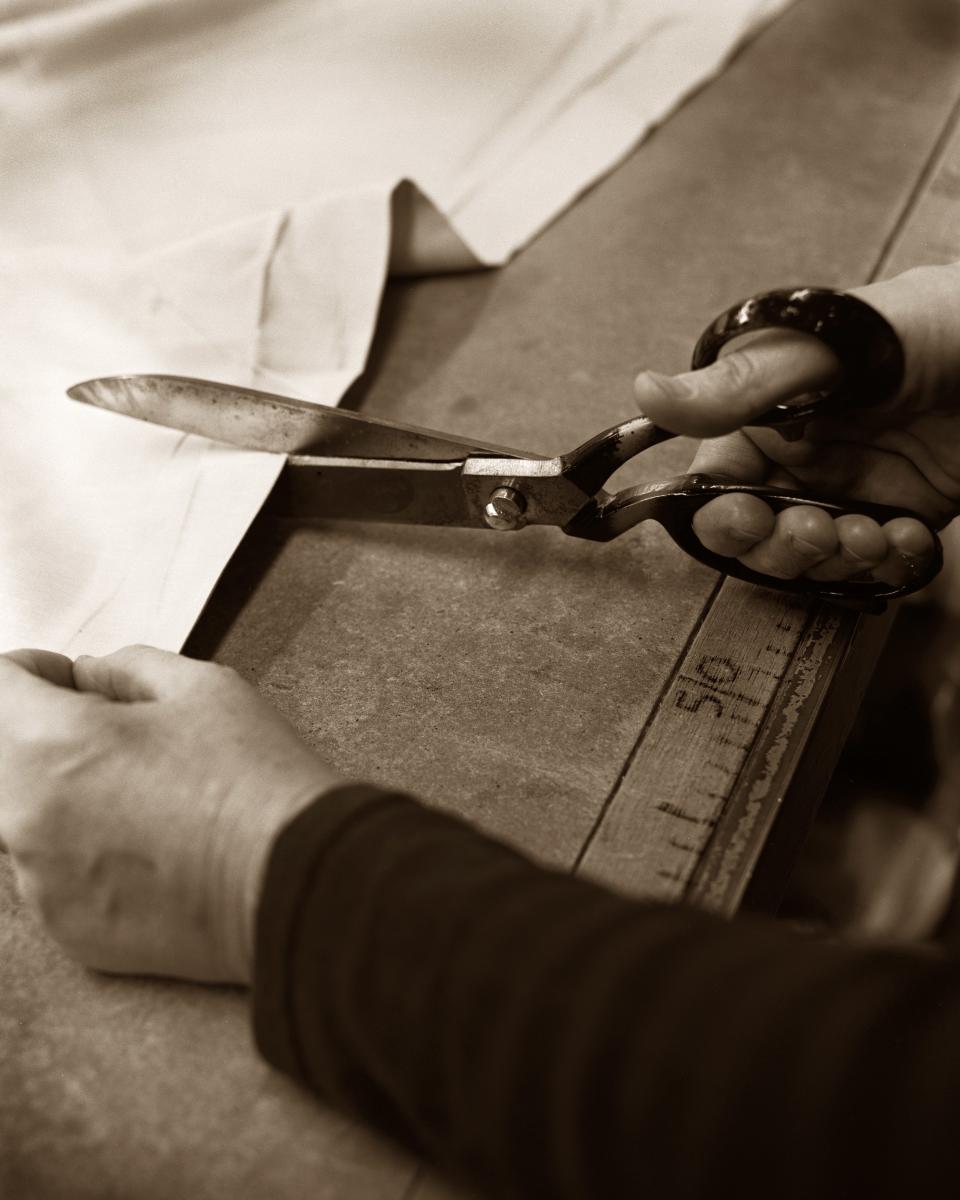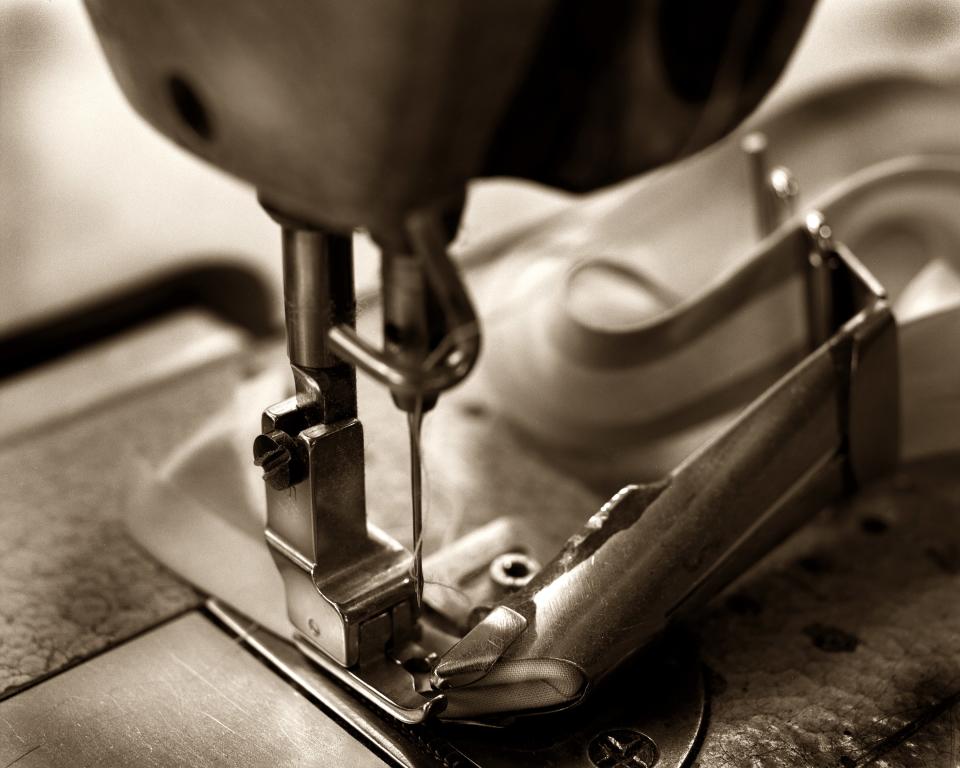An Italian Textile Expert Shares His Wisdom
For the most part, when we crawl into a bed, we just want it to be comfortable. We want the sheets to feel soft, probably, but also crisp, and for the color to complement the surrounding room. For Carlo Bertelli, these judgments are a veritable science. Bertelli, a third-generation textile master, has been weaving linen, percale, sateen, and lace from his Florentine studio for 40 years. He's supplied linens to some of the world's best known brands, including RH, which has worked with Bertelli for over 15 years on its private-label bedding. For RH, Bertelli creates collections as varied as ultra-fine lightweight linen and delicate Tombolo Braided Lace. They are all the product of a near-obsessive attention to detail and quality, a consideration that starts before the seed of a cotton plant has even sprouted. AD PRO sat down with the expert to hear about what, exactly, goes into the world's finest bedding.

On his beginnings
"I graduated in 1976 as a chemical engineer in textiles and I was, of course, looking for a job," Bertelli recalls. "By chance at this time I met my future wife, and her family owned Tessitura Toscana Telerie, which was at that time driven by my future father-in-law. So in 1978, I started working at this company, and here I am."
On marrying the technical and the beautiful
"I started working mostly as a designer, to produce new items but also to develop them," Bertelli recalls. "Because even if my background is technical, my true love is design, and the company needed someone who could give the technical and the modern." After 12 years of proving his ability to do just this, Bertelli took over as head of the company.

On thread count
"In America, you love to talk about the thread count," Bertelli laughs. "In Italy this is not so common." He credits American marketing campaigns looking for easily digestible ratings systems with instilling our thread count obsession. But, he points out, thread count is only part of the equation, and assessing quality based solely on this component is short-sighted. "Any textile product is made with many different components," Bertelli explains. "Not necessarily because it has very high thread count is something very high quality. Sometimes a high thread count [has] certain problems. If you go into the American market and buy a few examples of 1,000 thread count, you'll find some at a low price, but if you try the fabric, you'll understand that it doesn't match the high quality of that count. The quality matches the price. If you do not have an accurate treatment of the fiber, it completely will throw off the product. The quality of the fiber is what's really responsible for the quality. If you have a poor-quality fiber, even with the perfect construction, the product will always be inferior."
On softness
Don't be won over by softness alone, either: "At this moment, in the U.S., there are many people making very bad evaluations of certain fabrics, because they're looking for softness, softness, softness, and sometimes softness just means that you are using a very short staple yarn," Bertelli warns. "Every yarn which is longer staple is likely more stiff than short staple ones. But quality should not be just for one use—it should last for a reasonable time. It should stay for 200 to 250 washes. That's our goal when we look for a new fabric."

On provenance
"In the U.S., there is an assumption that Egyptian are the best fibers in the world." Bertelli doesn't mince words expressing his thoughts on that phenomenon: "This is the most stupid thing that has ever been transmitted by a very unserious marketing operation," he says. "It's true that Egypt has probably the best fiber in the world for a very small percentage of production but it's also true that they can have the worst fiber in the world."
On controlling the supply chain
As Bertelli sees it, the only way to truly ensure your fiber is the best in the world is to go to the source: the seed. "If you don't have a perfect seed selection you can get something not as good," he says. "That's happening in many parts of Egypt, for example, because of the social and political problems there. Because of this, when you buy Egyptian cotton, it's not enough that you buy from Egypt, you have to test everything you buy to check that you have potentially good fiber."

On quality
"In Tuscany we have a word to define when a fabric is poor quality," Bertelli says. "We say cenco, which means this fabric is falling apart—it 'can't stay.' It's simply poor. This term goes way back to medieval trade when the merchants touched something that wasn't good quality." It's not always apparent to the amateur touch, either. "Sometimes consumers are driven by the wrong marketing information to think that if fabric is soft it will be like this forever. But after a few years it will start opening too much to be used," he says.
On quality control
Ultimately, ensuring the best quality fabric means keeping an eye on the entire process, from seed to yarn to weave. "We have a specific mill so we completely control our fabric," Bertelli says. Only then can they notice the tiny imperfections which might lead to more longer-lead quality issues in a less carefully controlled mill. "The fibers have certain characteristics," Bertelli explains. "The consistency and the dimension of the fiber are very important. If the fiber is very good quality, the thickness will stay the same for a long time. So we analyze the cotton for contaminations. Contaminations sometimes are not very visible at first, but might become visible after dyeing." These might be small discolorations or weaknesses in the fibers. "The most important thing," says Bertelli, "is that the fiber must be resistant enough to support the weaving of the high-speed loom. Every time the yarn breaks there is a potential defect, because the machine stops, someone must recover the broken yarn and make a knot, which then becomes a point of irregularity in the fabric."
On the future
Lucky for those buying his goods, Bertelli has no plans of stepping away from textiles. "I am technically retired," he chuckles. "But I am always working on certain things."
More from AD PRO: Has Instagram Made Design Shows Better?
Sign up for the AD PRO newsletter for all the design news you need to know

